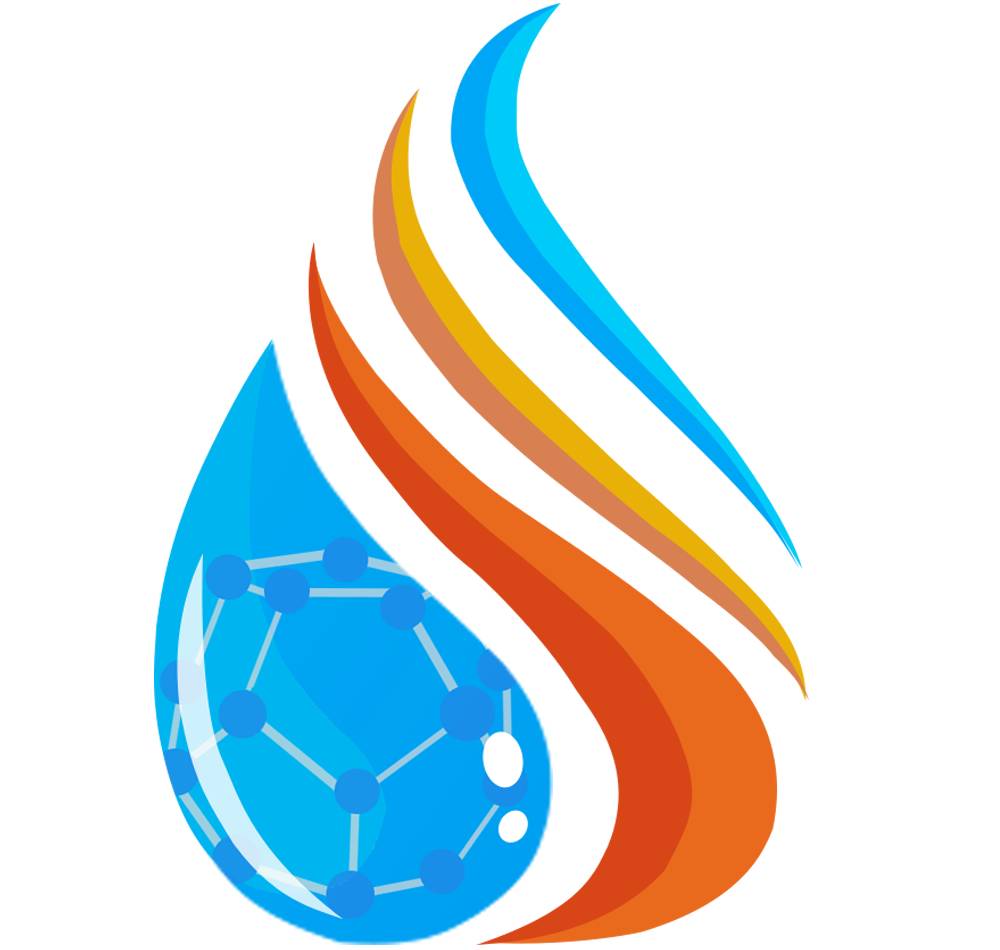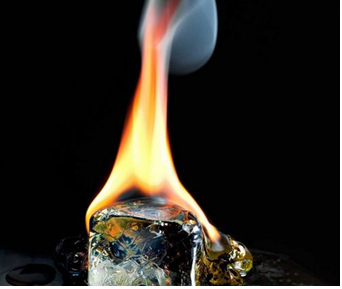《佳文速递》2025年第5期
 收藏
收藏
Transportability of hydrate slurry in the presence of wax
有蜡存在时水合物泥浆的可运输性
发表时间:2025年6月14日
发表期刊:《Chemical Engineering Science》
Luiz Henrique Meneghel Lino, Gianluca Lavalle, Eric Serris, Jean Michel Herri, Ana Cameirao, Nicolas Lesage, Annie Fidel Dufour
Abstract: Flow assurance remains a critical challenge in oil and gas production, with hydrate and wax deposition representing two of the most significant risks to safe and continuous operations. This study investigates the coupled transport of gas hydrates and wax in multiphase systems, with a focus on understanding how dispersed wax particles influence hydrate formation and the risk of pipeline plugging. Experiments were performed in a high-pressure flow loop using a water-in-oil emulsion (10% water cut), where both flow rate and wax concentration were systematically varied. The results demonstrate that the presence of wax significantly reduces the hydrate volume fraction, thereby mitigating plugging risk. For instance, at a flow rate of 400L/h, the hydrate fraction decreased from 8.6% in wax-free oil to 1.8% with 5wt% wax. This effect is linked to the increased apparent viscosity caused by wax precipitation, which promotes particle agglomeration and reduces the active surface area for hydrate crystallization. These findings offer new insight into the complex interplay between wax and hydrate in multiphase flow systems and suggest that wax presence, under certain conditions, may play a protective role against hydrate plugging.
Keywords: Flow assurance; Hydrate; Wax; Multiphase flow; Plug
Fig. 13. Horizontal pressure drop and absolute energy (2A) for experiments at (a) 200 L/h and wax-free (experiment #1), (b) 400 L/h and wax-free (#4), (c) 200 L/h and 1.25 wt % of wax content (#7), (d) 400 L/h and 1.25 wt % of wax content (#9), (e) 200 L/h and 2 wt % of wax content (#11), (f) 400 L/h and 2 wt % of wax content (#13), (g) 200 L/h and 5 wt % of wax content (#15), and (h) 400 L/h and 5 wt % of wax content (#17).
https://doi.org/10.1016/j.ces.2025.122031.
Hydrate-constructed transport tubes revealed by microfluidics: Implications for self-sealing capacity of CO2 sequestration reservoirs
微流体技术揭示的水合物构建的输送管:对二氧化碳封存库自密封能力的影响
发表时间:2025年6月6日
发表期刊:《Chemical Engineering Science》
Xiangen Wu, Qian Zhou, Lifu Zhang, Zhe Wang, Lin Wang, Shilong Luo
Abstract: Hydrate-based CO2 sequestration in deep-sea sediments is a promising carbon storage method, yet its stability depends on hydrate distribution and multiphase flow dynamics, which remain poorly understood at the pore scale. Using a high-pressure microfluidic chip, this study visualizes the coupling of gas–liquid-hydrate flow and phase transitions. Results reveal a two-stage process: (1) an episodic stage, where unstable CO2-water hydrates undergo cyclic dissociation and reformation driven by gas–liquid displacement, causing alternating blockages and pressure fluctuations; (2) a steady stage, where hydrates form a stable framework along flow channels, initially blocking pores. Gas then breaches the hydrate membrane via finger-like incursions, increasing hydrate saturation. Hydrate-constructed tubes provide channels for the low permeability of the gas–liquid two-phase during the steady state phase, resembling submarine cold seeps. This work elucidates pore-scale mechanisms, offering a kinetic criterion for hydrate stability and supporting safety evaluations for deep-sea CO2 sequestration.
Keywords: Hydrate-based CO2 sequestration; Carbon storage; Multiphase flow dynamics; Microfluidic chip; Hydrate-constructed tubes
Fig. 6. Gas-liquid seepage and evolution of hydrate formation during episodic and steady stages.
https://doi.org/10.1016/j.ces.2025.121995.
Enhancement of hydrate growth rate and ordered distribution with sodium dodecyl sulfate in a rocking cell
用十二烷基硫酸钠提高摇床中水合物的生长速度和有序分布
发表时间:2025年6月18日
发表期刊:《Chemical Engineering Science》
Zhennan Zhang, Huan Yang, Deshui Xue, Haotian Luo, Yanjiang Yu, Weiqi Fu
Abstract: The industrial application of gas hydrate-based technology is hindered by the hydrate slow growth rate and unordered distribution, which are governed by the hydrate film growth kinetics at the updated gas–liquid interface in the reactor. The sodium dodecyl sulfate and rocking methods were combined in this work. The methane hydrate growth experiment in the rocking cell was conducted at three initial pressures (9MPa, 10MPa, 11MPa) and six SDS concentrations (0.00wt%, 0.01wt%, 0.02wt%, 0.03wt%, 0.04wt%, 0.05wt%, 0.06wt%). Once the SDS concentration was higher than the critical micelle concentration (0.04wt%), there were more than one hydrate growth sub-stages, corresponding to a bi-peak curve or multi-peak curve for the change of hydrate growth rate with time. As the SDS concentration increased from 0.00wt% to 0.06wt%, the average gas consumption rate increased 6.86 times at 9MPa and 9.62 times at 11MPa. The hydrate was orderly distributed in the form of a hollow tube. The gas–liquid interface is updated in the form of wetting films, and the hydrate film growth kinetics only includes the lateral hydrate film growth along the gas–liquid interface at a high rate. The matching of the update of wetting films and the hydrate film growth kinetics at the spatiotemporal scale leads to the hydrate layer-by-layer growth, resulting in effective enhancement of the hydrate growth rate and ordered distribution of hydrate in the reactor. This work provides a new idea to design a novel hydrate reactor.
Keywords: Hydrate growth; Wetting films; Hydrate film; Rocking cell; Sodium dodecyl sulfate
Fig. 4. Hydrate distribution under initial pressure of 11MPa. (a) SDS concentration is 0.00wt%, (b) SDS concentration is 0.01wt%, (c) SDS concentration is 0.02wt%, (d) SDS concentration is 0.03wt%, (e) SDS concentration is 0.04wt% (combustion state), (f) SDS concentration is 0.05wt%, and (g) SDS concentration is 0.06wt%.
https://doi.org/10.1016/j.ces.2025.122053.
Molecular dynamics insights into tetrahydrofuran-assisted formation of CH4, CO2, and H2 gas hydrates
四氢呋喃辅助形成 CH4、CO2 和 H1气体水合物的分子动力学见解
发表时间:2025年6月18日
发表期刊:《Physical Chemistry Chemical Physics》
Kanaujiya R, Metya AK, Choudhary N, Kumar R, Patra TK.
Abstract: Gas hydrates, also known as clathrate hydrates, are crystalline compounds formed when water molecules organize into cage-like structures that encapsulate gas molecules under conditions of high pressure and low temperature. These hydrates occur naturally in permafrost regions and deep-sea sediments and have gained significant interest as potential energy sources and for applications in gas storage, transportation, and sequestration. Here, we deploy molecular dynamics (MD) simulations to investigate the molecular-level mechanisms governing the formation and stabilization of CH4, CO2, and H2 hydrates in the presence of tetrahydrofuran (THF). We analyze key structural and energetic properties, including tetrahedral order parameters, cage dynamics, and gas uptake throughout different hydrate formation stages: pre-nucleation, nucleation (induction), growth, and saturation. Our findings provide insights into the role of THF concentration in altering hydrate phase behavior, as well as kinetic and gas occupancy preferences within hydrate cages. The study offers a comprehensive understanding of hydrate nucleation mechanisms and thermodynamic stability, contributing to advancements in gas hydrate applications for energy and environmental technologies.
Fig. 2 Side views of MD snapshots captured at the end of 5ns of initial equilibration at 300K and 10MPa in the presence of 5.56mol% THF for gas systems: (a) CO2, (b) CH4, and (c) H2. Atom colors are the same as those denoted in Fig. 1. Panel (d) shows the radial distribution function of gas molecules computed over the 5–10ns interval at 300K and 10MPa for THF concentrations of 0(left), 1.42(middle), and 5.56% (right).
https://doi.org/10.1039/d5cp01574j
Impact of multiphasic pore-scale interactions on gas hydrate formation and dissociation characteristics and kinetics: a microfluidic study
多相孔隙尺度相互作用对天然气水合物形成和解离特征及动力学的影响:微流体研究
发表时间:2025年6月13日
发表期刊:《Lab on a Chip》
Yuze Wang, Jianyu Yang, Pengfei Wang, Jinlong Zhu, Yongshun John Chen
Abstract: Understanding the multiphasic interactions governing gas hydrate formation and dissociation is critical for optimizing natural gas storage and extraction. This study investigates the characteristics and kinetics of methane hydrate formation and dissociation within porous media using a microfluidic chip platform designed to simulate natural conditions. By introducing methylene blue for enhanced phase differentiation, five distinct hydrate morphologies-block, vein, point, membrane, and shell-were identified. These morphologies were strongly influenced by multiphasic interactions involving water, gas, and solid phases. Block and vein hydrates predominantly formed in water-saturated pores, while point and membrane hydrates appeared as coatings associated with gas migration. Shell hydrates emerged post-gas relocation, filling pore spaces. During dissociation, free gas presence significantly accelerated the dissociation process, achieving rates approximately 12 times faster than in water-only systems. Gas migration played a pivotal role in hydrate fragmentation and dissociation kinetics. These findings deepen our understanding of gas hydrate behavior under multiphasic conditions, offering valuable insights for enhancing natural gas storage and extraction.
Fig. 4 Microscopic images: (a) before hydrate formation; (b) after hydrate formation; (c) block hydrates; (d) vein hydrates; (e) point hydrates; (f)shell hydrates; and (g) membrane hydrates.
https://doi.org/10.1039/D5LC00093A
Unveiling the Power of CO2 Gas Hydrates: Precise Size Control and Enhanced Drug Encapsulation for Next-Generation Niosomes
揭示二氧化碳气体水合物的力量:为下一代 Niosomes 提供精确的尺寸控制和更强的药物封装能力
发表时间:2025年6月9日
发表期刊:《Industrial & Engineering Chemistry Research》
Azam Shadloo, Kiana Peyvandi, Abolfazl Shojaeian, Sheida Shariat
Abstract: This study reports the first-time application of the CO2 gas hydrate method for the size reduction of multilayered niosomes loaded with Tretinoin. This novel technique was developed by integrating pharmaceutical science with chemical engineering principles. This approach enabled the efficient incorporation of low-efficiency drugs into niosomes while simultaneously reducing their diameter. Additionally, this innovative method had the ability to separate niosomes of different sizes. In detail, a series of four different parts of hydrate experiments were conducted to study the effects of various formulating parameters through the gas hydrate method. First, niosomes were shaped with three distinct molar masses and experienced the hydrate tests for size reduction at 30bar and 275K. In the second part of hydrate experiments, the entrance niosomes had larger diameter with the same situation of hydrate tests along with 83% of diameter reduction. Also, at the third part of hydrate experiments, the maximum diameter reduction of 68% was achieved with two hydrate formation stages at 30bar and 275K. Afterward, in the fourth part, the focus shifted toward investigating the impact of the ratio between the volume of the solution and the pressure of the input gas. The greatest diameter reduction (76%) occurred at a volume of 35cc and a pressure of 30bar in this part. The results demonstrated the feasibility of using this approach to effectively reduce niosome size and improve their functionality.
Fig1. (a) 2-D and (b) 3-D schemes of the MLV niosomes preparation apparatus. Part (1) is the main part of the rotary evaporator for adjusting the conditions. It is connected to the proper flask (2), which rotates and contains the materials. This flask is connected to the column (3) and the vacuum pump (4). Part (5) is a pump for circulating the water around the column.
https://doi.org/10.1021/acs.iecr.5c00213
 UPC-WY
UPC-WY

 DWOG-Hyd 2021
67帖子
DWOG-Hyd 2021
67帖子
 Haotian Wang
9帖子
Haotian Wang
9帖子
